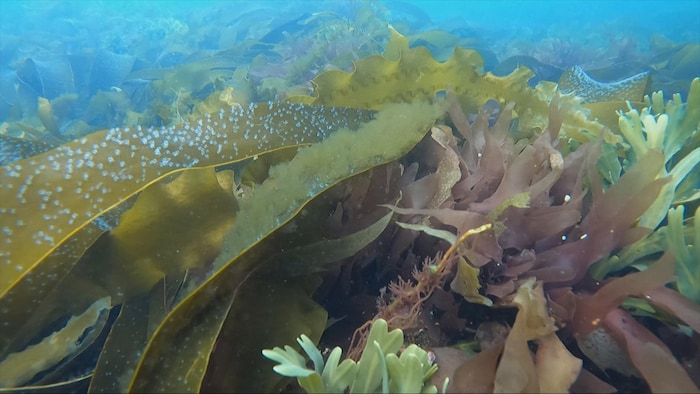Open in full screen mode For several decades, deoxygenation has reached hypoxic levels, which influences marine fauna and flora. (Archive photo) Speech synthesis, based on artificial intelligence, makes it possible to generate spoken text from written text. The mystery of the deoxygenation of the St. Lawrence estuary clears up. A study published in the scientific journal Nature Communications highlights the causes of this decrease in oxygen concentrations. In recent decades, deoxygenation has reached hypoxic levels, which influences marine flora and fauna. Hypoxia is state of a living organism or an environment which is in oxygen deficit. In 2020, we saw a really sharp drop. The [oxygen] concentration dropped by half in one year, says Mathilde Jutras, postdoctoral oceanography researcher at the University of Hawaii at Manoa and co-author of the study, the results of which were published in June . In addition to a decline, scientists also note an expansion of the hypoxic zone in the river. Loading in progress ELSEWHERE ON INFO: A renewed “Team Canada” to prepare the country for the American elections Before, it was located in the estuary opposite Rimouski and now, it's from Rimouski to Anticosti Island, continues Ms. Jutras. It's mainly due to disturbances in deep waters , which enter the Gulf of St. Lawrence through the Cabot Strait, explains the researcher. We have more and more water from the Gulf stream, which is warm and weak in oxygen, which enters, whereas before, we had rather cold waters from the Labrador Current, she observes. We set out to try to understand what causes this. It seems that it may be a change in the circulation, in the winds and in the large-scale circulations in the Atlantic, which are influenced by climate change. A quote from Mathilde Jutras, researcher in oceanography
A “Team Canada” renewed to prepare the country for the American elections
The Gulf Stream, the great regulating current of the Atlantic, is migrating further and further north, very close to the Cabot Strait , between Newfoundland and Nova Scotia, according to the researcher. (Archive photo)
The conclusions of this study are part of the list of 10 discoveries of the year 2023 from the magazine Québec Sciences< /em>.
Fertilizers and nutrients from wastewater discharged into the river would also have their role to play in this deoxygenation.
It has the same phenomenon as blue-green algae in lakes, says Mathilde Jutras. If we add fertilizer to the water, we have [blooms] of algae and when these die, they settle on the seabed where they will be decomposed by bacteria, which breathe and consume the oxygen.
According to the researcher, with better use of resources and better regulation of nutrient discharges, the situation could be resolved.
Solutions to alleviate the hypoxia currently experiencing the St. Lawrence River are proposed, notably in a study co-signed by Mathilde Jutras, published at the end of last December.
The study proposes injecting oxygen residues [from] the production of green hydrogen into [the hypoxic zone], summarizes the researcher.
Deoxygenation in the St. Lawrence Estuary and Labrador Current. BROADCAST HERE FIRST. At the heart of the world.
Deoxygenation in the St. Lawrence Estuary and Labrador Current
BROADCAST HERE FIRSTIn the heart of the world
Listen to the audio (Deoxygenation in the St. Lawrence Estuary and Labrador Current . 10 minutes 35 seconds)

